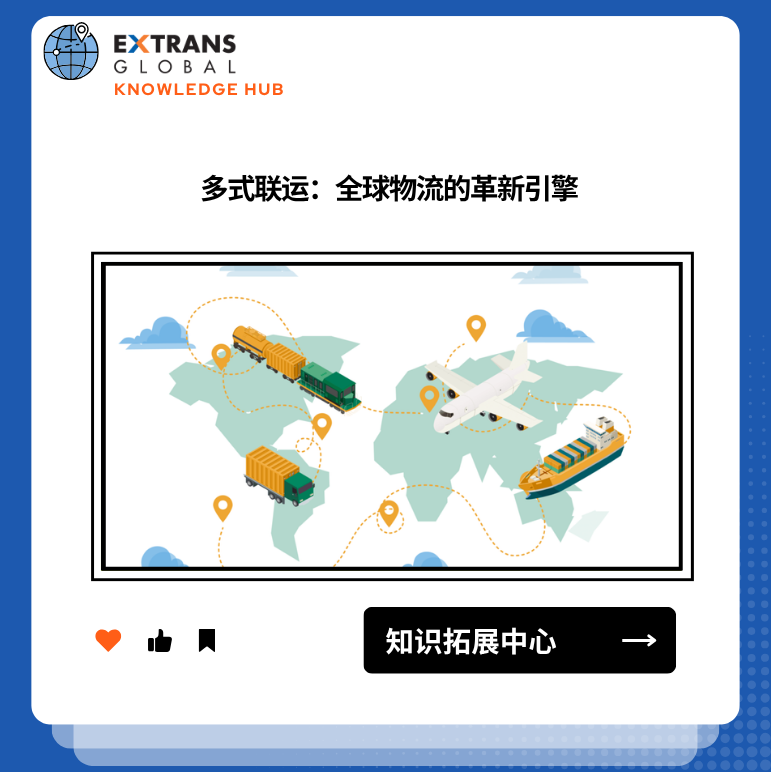多式联运:全球物流的革新引擎
 在全球物流行业加速迭代的进程中,多式联运正以蓬勃之势成为重构行业格局的核心引擎。这种融合两种及以上运输方式(涵盖公路、铁路、水路、航空等)的创新物流模式,凭借其独特优势,正重新定义全球供应链的运作范式,为企业与市场开启前所未有的发展新机遇。
在全球物流行业加速迭代的进程中,多式联运正以蓬勃之势成为重构行业格局的核心引擎。这种融合两种及以上运输方式(涵盖公路、铁路、水路、航空等)的创新物流模式,凭借其独特优势,正重新定义全球供应链的运作范式,为企业与市场开启前所未有的发展新机遇。
多式联运的运作模式与显著优势
1. 无缝衔接运输链:整合海运、铁路、公路等多种运输方式,例如 "海铁联运" 中货物先海运抵港,再转铁路深入内陆。这一过程彻底打破单一运输方式的局限,充分释放各类运输手段的优势潜能。
2. 优势互补机制:
- 海运:运量大(单次可运数万标箱)、成本低(吨公里成本仅公路 1/3),适合跨洋长距离运输,能够确保货物在内陆运输中的稳定性与时效性。
- 铁路:准点率超 98%、受天气影响小,保障内陆运输稳定性。与海运深度结合,不仅使运输效率大幅提升,更显著降低了物流成本。
- 公路:灵活实现 "门到门" 配送,与铁路运输结合,可有效破解货物 “最初一公里” 和 “最后一公里” 的运输难题。
- 空运:运输速度快捷,适合高附加值、时效性强的货物运输,与陆地运输方式搭配,能满足多样化的物流需求,进一步凸显多式联运灵活适配的独特优势。
据行业权威数据统计,多式联运量占全社会货运量的比重每提高 1 个百分点,可使社会物流总费用降低约 0.9 个百分点,节约成本支出高达 1000 亿元左右。
多式联运在全球的成功实践:多式联运在全球范围内已打造出诸多令人瞩目的成功典范。
在欧洲,依托其密集高效的铁路网络与发达的内河航运体系,多式联运蓬勃发展。
例如,德国通过整合莱茵河的水路运输与铁路运输资源,精心打造了一条连接内陆工业城市与荷兰鹿特丹等海港的高效物流通道。企业货物借助这一通道,可在欧洲内陆与全球市场间实现顺畅流转,极大提升了欧洲制造业在全球市场的竞争力。
在亚洲,中国积极推动 “一带一路” 倡议下的多式联运发展。西部陆海新通道海铁联运班列自 2017 年开通以来,班列开行数量持续攀升,年增速位居全国首位,从最初的 178 列迅猛增长至 2022 年的 8800 列,实现了 48 倍的惊人增长。这条通道将中国西部地区与东盟等地区紧密相连,为中国内陆地区的货物开辟了便捷的出海通道,有力带动了沿线地区的贸易繁荣与经济增长。
技术创新与政策支持双轮驱动:技术创新与政策支持构成推动多式联运发展的两大强劲动力。
1. 技术创新应用:
- 物联网:货物运输全程可实现实时监控,企业能够精准掌握货物位置、运输状态等关键信息,提前做好应对准备。
- AI 算法:大数据与人工智能被广泛应用于优化运输路线规划,通过对海量运输数据的深度分析,精准预测运输过程中可能出现的交通拥堵、恶劣天气等潜在风险,并及时调整运输方案,确保货物按时、安全送达目的地。
2. 政策支持体系:各国政府纷纷出台利好政策,大力鼓励多式联运发展
- 欧盟:持续加大对交通基础设施建设的投入,不断完善不同运输方式之间的衔接设施,如投资 240 亿欧元升级多式联运枢纽。
- 中国:多部门联合印发《推进铁水联运高质量发展行动方案(2023—2025 年)》,聚焦提升设施联通水平、提升联运畅通水平等 4 个方面共 13 项任务,为多式联运发展提供了坚实的政策保障。
多式联运对全球物流的深远影响
1. 供应链韧性强化
- 应急切换机制:极端天气导致公路中断时,货物可快速转铁路 / 水路运输
- 案例:2024 年美国加州山火期间,某企业通过 "海运 + 铁路" 替代公路运输,保障芯片准时交付
2. 绿色物流推进
- 减排数据:
- 中欧班列碳排放量仅为公路运输 1/7
- 某英国超市采用多式联运后,年减碳 8000 吨(相当于 45 万棵树)
- 政策导向:67% 跨国企业将碳排放纳入物流供应商考核
3. 市场边界拓展:因交通不便而难以触及的偏远地区,借助多式联运的独特优势,能够便捷地融入全球供应链体系,为企业带来新的业务增长机遇。
- 典型场景:
- 非洲内陆国家通过 "港口 + 铁路" 接入全球供应链
- 中国新疆番茄通过 "铁路 + 海运" 出口至欧洲,运输成本降低 20%
多式联运面临的挑战与应对策略
1. 核心挑战
- 标准不统一:不同运输方式之间的标准不统一是多式联运面临的一大难题,如集装箱规格、货物装卸标准、信息接口规范等存在差异,导致货物在转运过程中效率低下,如中欧铁路轨距差异导致换轨耗时(1 列火车换轨需 4-6 小时)。
- 协调难度大:多式联运涉及多个运输企业与部门,协调难度大,信息共享不畅,容易出现运输延误、货物丢失等问题。
2. 破局路径
- 标准化建设:
- ISO 统一集装箱规格(已被 192 国采用)
- 中老铁路实现 "一次查验",通关时间从 48 小时缩至 4 小时
- 技术赋能:
- 区块链平台(如 TradeLens)实现物流数据实时共享
- 中国广西 "单一窗口" 系统让报关时间从 2 天减至 2 小时
结语
当全球供应链正在经历 "效率革命" 与 "绿色转型" 的双重变革,多式联运已从创新模式升级为行业标配。从德国莱茵河畔的铁水联运枢纽,到中国西部呼啸而过的海铁班列,这种融合多种运输方式的物流体系,不仅是降低成本的工具,更是重构全球贸易格局的基础设施。
对于企业而言,拥抱多式联运意味着获得三重竞争力:通过运输路径多元化提升供应链韧性,借助低碳运输方式响应 ESG 发展要求,利用技术赋能突破地理边界开拓新市场。正如西部陆海新通道 48 倍的增长奇迹所示,在这个 "物流即服务" 的时代,谁率先掌握多式联运的运作密码,谁就能在全球供应链重构中占据主动。
Extrans—— 多式联运解决方案的全球践行者
作为行业创新先锋,Extrans 已构建覆盖亚欧美三大经济圈的智能运输网络,尤其在亚洲区域内联运领域形成独特优势:
- 跨境专线服务:
✅ 中越边境联运方案(公路 / 铁路 + 空运):实现中国与越南跨境货物的多式联运无缝衔接
✅ 郑州 - 欧洲班列服务:依托中欧班列提供郑州至欧洲的铁路运输服务
✅ 中韩海空联运:整合海运与空运资源,为中韩跨境货物提供灵活的运输方案 - 区域物流服务:
提供中越边境货运、越南国内长途货运等区域物流服务,助力企业在东南亚市场的物流需求。
更多多式联运服务详情,可访问 Extrans 官网:https://www.extransglobal.com,了解中韩海空服务、中越边境货运等具体解决方案。
立即联系我们,获取专属多式联运解决方案,让 Extrans 以多式联运为桥梁,助力您跨越地理阻隔,链接全球商机。

top



